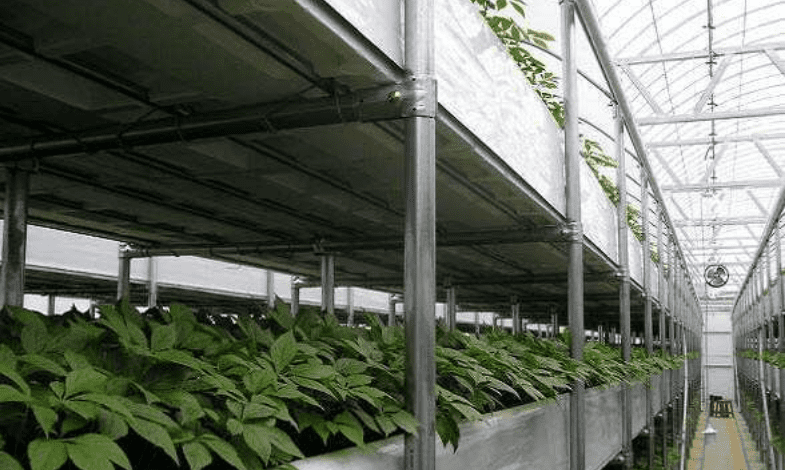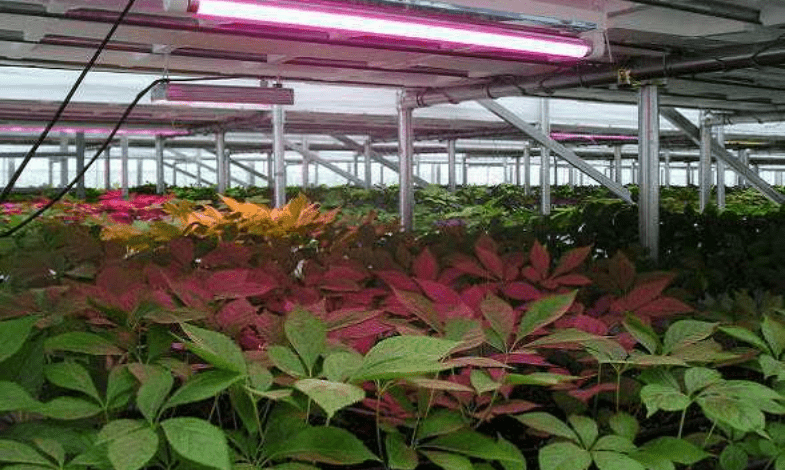Guide To Grow Ginseng Hydroponically: If you want to learn how to produce ginseng hydroponically, you may break it down into three steps: foundation preparation, planting, and upkeep. Ginseng is one of the healthiest crops to cultivate at home, and it’s especially simple to do so in a greenhouse. As a result, it’s no wonder that many gardeners are looking into hydroponic systems to make their crops more ecologically friendly.
Using a greenhouse in conjunction with hydroponics is not only beneficial to the environment since it saves water and necessitates fewer pesticides and herbicides. This technique gives a greater growth rate for cultivating a highly marketable product like ginseng, providing you with a high return rate. Growing ginseng hydroponically in a greenhouse saves you time and effort over traditional soil growing.
Ginseng growing is relatively new to the world of hydroponics, but several growers from all over the world have devised various techniques to do it. One of the main reasons for this is the relatively long development time of ginseng; the root may frequently be collected after four years of growth. Ginseng is a popular supplement in American culture, with advantages such as improved energy, focus, and alertness. Few individuals realize that this supplement is derived from a plant–specifically, the plant’s roots. Ginseng is a tiny, protected plant that thrives indoors and in regulated environments such as a hydroponic system. The guide to growing ginseng hydroponically is given below:
Guide To Grow Ginseng Hydroponically: Step by Step Guide
Step 1: Preparation of Growing Foundation
Hydroponics systems necessitate a great growth foundation, and when it comes to ginseng, pick something that is as near to the natural environment as possible. Peat moss is one of the greatest growth foundations for this crop since it is comparable to ginseng’s native environment, forest floors. For your hydroponic system, you can utilize peat moss-filled containers.
A combination of peat moss, perlite, and forestry sand is another growth medium for ginseng. It’s also worth noting that there are many techniques for ginseng’s hydroponic system, so you may choose anything that works best for you. Some producers, for example, begin by freezing sacks of sand and ginseng seeds for four months to simulate the circumstances of being buried in the fall and winter.
Step 2: Planting
Plant ginseng roots or seedlings two inches deep in peat moss, with the sprouting portion facing upward. Hydroponic ginseng cultivated in the wild may also be recommended by gardeners. Otherwise, you can use roots or seedlings, but only from a trustworthy supplier.
Another acceptable ratio to use in a growth medium is four ginseng seeds for one root trainer. When it comes to the location of your hydroponic system, ginseng will grow if it receives the same amount of sunshine as it does in the wild. This implies that you should filter the sunlight to simulate this habitat, and utilizing a greenhouse will replicate the crop’s natural environment.
Remember that ginseng grows nicely in the dark, hardwood woods of the eastern United States. Use a low wattage light in the greenhouse and keep the temperature between 68 and 72°F. Nonetheless, it would be beneficial if you learned as you went with hydroponically growing and made it a habit to continuously watch your plants.
Read more about How to grow blackberries?
Step 3: Maintenance
To guarantee that the system adequately nourishes your plants, use a ginseng-specific nutrition solution. Mix the solution according to the package recommendations, then pour it into your water trays to flow it over the ginseng roots. The usage of water trays like these in a hydroponic system allows you to simply water and nourish your plants at a fixed rate.
You may also irrigate weekly with water containing a fertilizer solution and every fourth week with simply water. To accelerate maturity, keep the seedlings in cold storage for 14 weeks after 20 weeks. In general, it takes two years to harvest hydroponically produced ginseng.
If the fresh weight of the ginseng roots is at least one ounce, it is a good indicator that they are ready for harvest. Patience is required when waiting for harvest, but the reward from high-quality produce is well worth the wait.
Why Is Ginseng Suitable for Hydroponics?
As time passes, an increasing number of gardeners are considering adopting hydroponics to grow ginseng. Ginseng thrives well inside, which makes it an excellent choice for hydroponic cultivation. Remember that ginseng grows best in a cold, low-light setting, which is why it’s a greenhouse favorite.
But what makes hydroponic production a worthwhile undertaking for ginseng cultivation? To begin with, ginseng grows slowly, and its production is rather low to meet demand. The expense of cultivating ginseng in the wild is much greater than the cost of growing it in hydroponics.
Why Is Growing Ginseng Illegal? Everything you Should Know
Growing ginseng hydroponically will ensure that your harvest quality is constant, in addition to improving production. You may also make a big profit by cultivating ginseng till the roots are two years old. After all, these seedlings are ideal for hydroponics and may be grown at a high density.
Growing and selling ginseng seedlings helps other gardeners to obtain high-quality planting material. Because you grew them hydroponically, they will almost certainly be vigorous enough for soil-less production in the future. Hydroponically produced ginseng can be more profitable than soil-grown ginseng with the right patience and procedures.
Conclusion
Ginseng’s cold temperature and low light need make it an ideal crop for greenhouse farming. However, if you want to cultivate this crop for profit, spare yourself the trouble and learn how to produce ginseng hydroponically. A hydroponic system allows for soil-free ginseng cultivation that is both feasible and lucrative.
This method consists of three phases. They are growing foundation preparation, planting, and upkeep. Growing ginseng hydroponically is very simple, and the important lesson is to make sure you’re imitating its natural habitat, which a greenhouse may assist with. Using a ginseng-specific nutrition solution should also help your crops grow.
Learn more about How to grow Microgreens Commercially?
Frequently Asked Questions
Growing ginseng is one of the most effective methods to transform your time into extra money, since these high-value plants may produce roots worth hundreds of dollars per pound. If you’re new to producing ginseng, you probably have a lot of questions. Here are the answers to the most often asked questions by people interested in cultivating ginseng for business. The frequently asked questions about growing ginseng are answered below:
Why grow ginseng?
Most new producers are drawn by the potential rewards, as prices for mature ginseng roots have gradually risen in recent years. Excellent roots are selling for $300 to $600 a pound as I write this. Ginseng is also an excellent crop if you have a stand of hardwood trees, such as maple or oak, that you don’t intend to harvest for a few years.
Which growing method should I use?
The artificial shade approach can be effective, but it costs several thousand dollars per acre to set up the shade fabric and poles. If you have a few acres of hardwood trees, the wild-simulated technique can be quite effective. You’re probably going to employ the woods-cultivated technique. You just make use of the natural shade provided by a forest canopy of hardwood trees such as maple, oak, and sycamore.
How can I sell ginseng roots?
Ginseng roots can be purchased in three different ways. The first step is to sell to wholesale buyers directly. You’ll get paid straight away, and you’ll be able to sell directly from your backyard nursery. The second option is to sell to out-of-state purchasers. Take extra precautions before sending your ginseng. Pack it as though it were exquisite China! Finally, you may sell to ginseng brokers, who purchase ginseng in quantity and resale it to others.
Read more about Can You Eat Ginseng Berries? The reason you Should Know
When will my mature roots be ready to sell?
After five or six years, your mature roots should be ready for sale. Plant rootlets if you wish to harvest mature roots sooner, as they may produce a crop of mature roots in only three years.
Can I sell anything from my ginseng garden in the meantime?
You certainly can. Ginseng seeds and rootlets might be ready for sale three years after you start your ginseng garden. They may also make you a lot of money. Seeds, for example, are presently selling for approximately $150 per pound, while rootlets are selling for $2 apiece.



